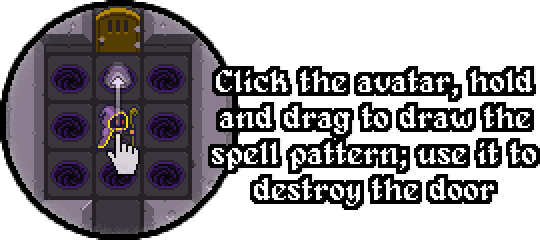This is the first of a series of posts about the conception, development, release, and monetization of The Wizard, our first attempt at making money with games.
The Wizard started out as a small experiment I worked on to learn the Phaser HTML5 framework. Back then, Crabman and I had just decided to take a break from our work on Till Last Light after realizing that we wouldn’t be able to afford the graphics we had in mind. Obviously we needed a smaller project for our humble beginnings. So we came up with a plan: We’d each create a small prototype in four weeks’ time and then we’d choose one of them as our new project.
I’m no programmer, so I knew I had to find something to help me with the more complex stuff I usually delegate to Crabman. Don’t get me wrong, I do enjoy programming, I just hadn’t gotten a lot of programming experience as a game designer. For TLL we had worked in Javascript and HTML5 and it had been a lot of fun, so naturally I started looking for a HTML5 framework. At the time there weren’t many game specific HTML5 frameworks, but there was one that seemed especially promising: The Phaser Desktop and Mobile HTML5 game framework. I downloaded it and quickly realized that it was exactly what I had been looking for. Additionally, it had a nice little community (which grew a lot since then) and awesome support for something that’s basically maintained by one guy. It had me convinced right then and there. I never even tested anything else.
The next step was to get some graphic assets. I wasn’t sure what kind of game I wanted to make yet, but I had been in love with Oryx’ sprites ever since I played Dungeons of Fayte. This was the perfect opportunity to make a game with his 16-bit fantasy sprite sheet. Convincing Crabman that we absolutely had to buy the sprites was easy enough, now I just had to figure out what to do with them.
My first idea was a group-based RPG about monster game keepers. They would get called by villagers every time a monster population grew too large and threatened the ecosystem. So, nothing fancy, just a few different classes, a dozen monsters, a bunch of items, various NPCs with individual quests and an open game world. It didn’t take me long to realize that this idea was getting too big already. To keep things simple I decided to start as small as possible: A single character in a small level with just one enemy type. Using the 16-bit fantasy tiles and the Tiled Editor, I created a small sewer level. Choosing the enemy was a no-brainer: It had to be rats, the traditional first enemy type, which meant only the player character was missing.
I was staring at the sprite sheet, contemplating on what character to use and listening to my fantasy playlist to get in the mood. To be honest, I don’t remember if it was during “Wizard” by Uriah Heep, but I know it was on the playlist. I’m usually not a fan of wizards in games – it’s mostly because the actual spell casting seldom feels right – but the sprite of the wizard intrigued me. Why didn’t he have a face? From a practical standpoint it also seemed like a good idea. A wizard didn’t need an item progression, implementing different spells would be enough. Thus The Wizard was born, or at least his first basic incarnation as a simple sprite inside of a small sewer section with a bunch of rats.
Stay tuned for the next part in which we’ll find out how the wizard learned to walk, cast spells and who is responsible for his lack of a face!
Hackenstein



